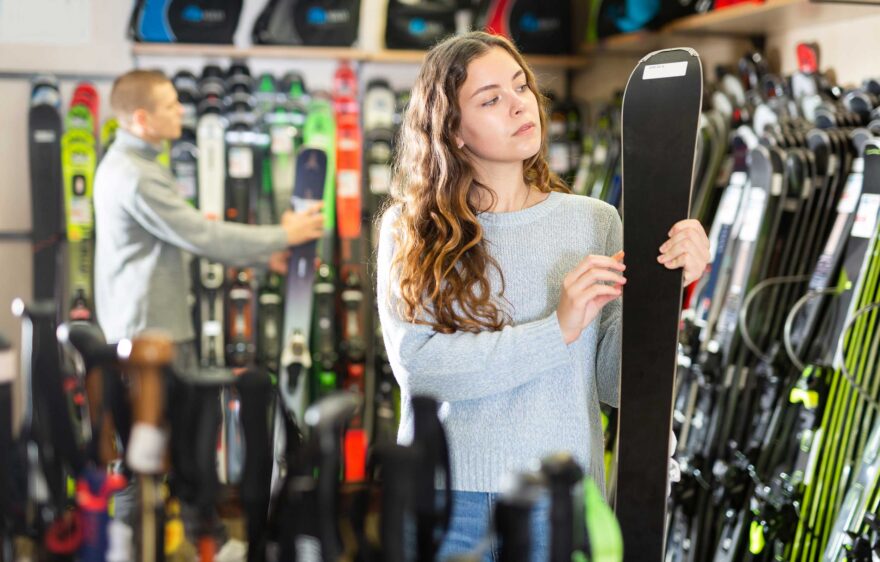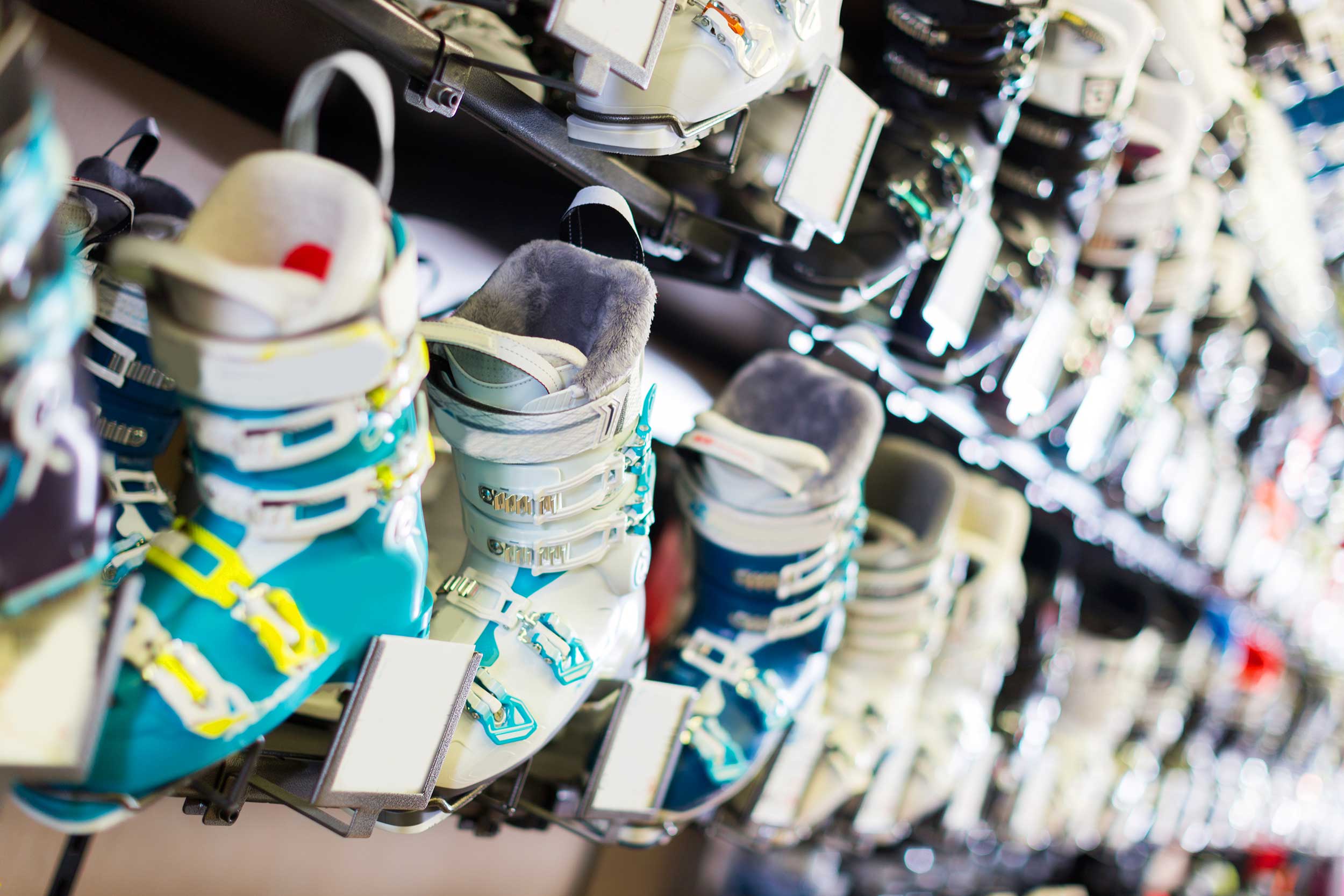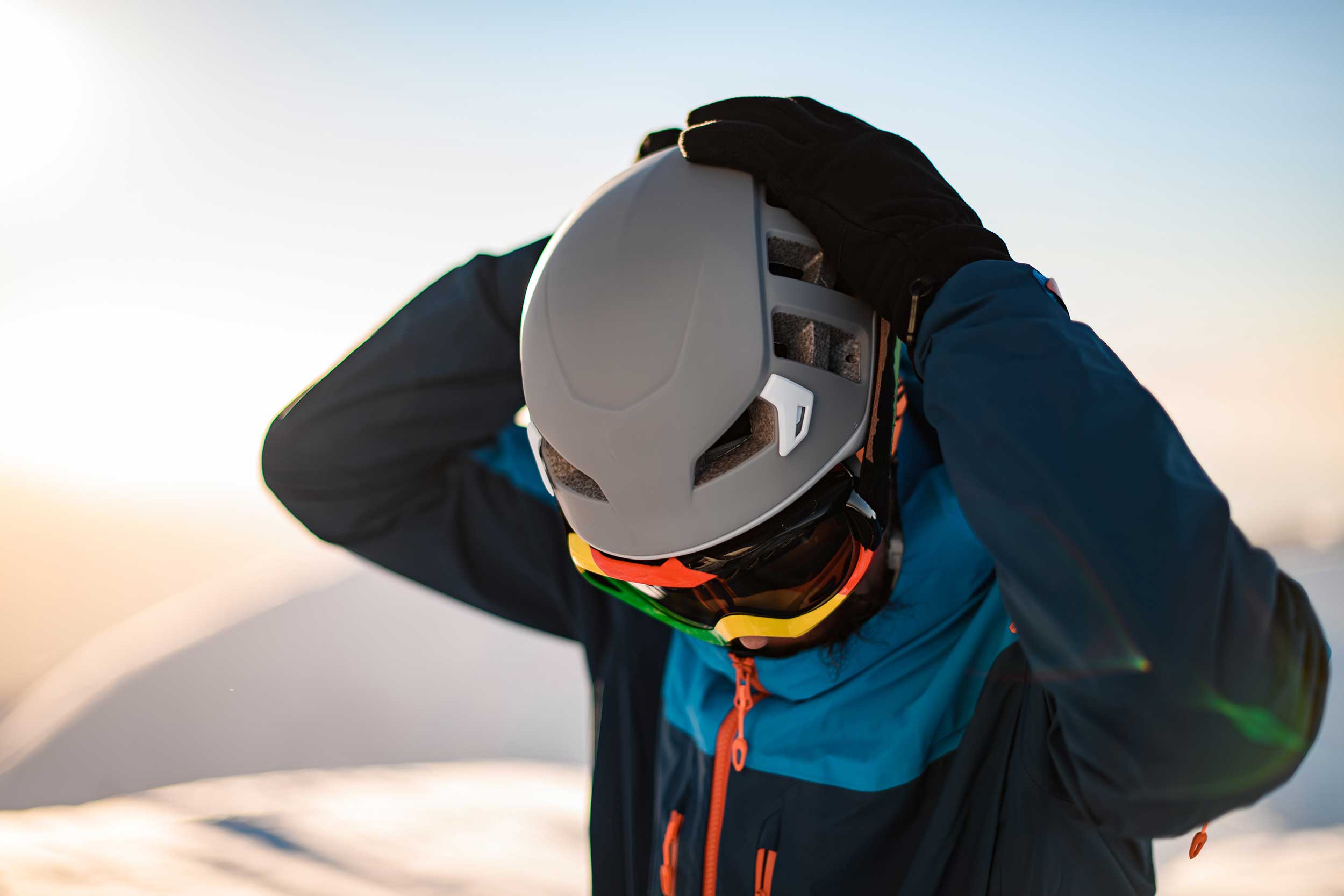
Image by BearFotos, Shutterstock
If you’ve downhill skied for a couple of seasons without your own gear, you know renting equipment can be expensive, even doubling the cost of your day on the slopes. As you start skiing more regularly investing in your own equipment can save you time and money, but with an array of options and technical jargon, shopping for your first ski gear can feel overwhelming. From choosing the right fit and balancing your budget to understanding the specific needs of your skiing style, it’s essential to equip yourself with knowledge before making a purchase.
This guide will walk you through three fundamental considerations to ensure your ski gear enhances your experience, keeps you safe, and sets you up for countless memorable runs down the mountainside:
1. Budget
When purchasing downhill ski gear, know up front it is going to be a big investment. If purchasing new, beginners can usually get a decent ski boot for just under $300, and skis can cost $400 to $600. The skis may or may not come with bindings (the part that attaches your boot to the ski) so be prepared to spend $200 to $300 on those as well. If you are in sticker shock, remember that unless you are purchasing for a child who will grow out of the equipment, this gear can last you a decade or more if it is well cared for.
If you are going to splurge anywhere, definitely invest in boots. An uncomfortable boot can make or break your skiing experience.

Image by BearFotos, Shutterstock
A good alternative to buying new is finding some quality used gear. Many ski areas and shops have ski swaps at the beginning of the season where you can find decent gear at a good price.
When you purchase skis from a ski swap, talk to one of the staff on hand to ensure the bindings on the skis you want to purchase are able to be serviced. Ski binding manufactures put out a list of approved bindings for the season, and any bindings not listed cannot be worked on at a ski shop for liability reasons. You will need the shop to adjust the bindings to your boot size and it would be a bummer to find out you need to purchase new bindings because the ones currently on the ski are not serviceable.
2. Fit
Correct ski length and proper boot fit to your foot are essential for your ski gear. Do not buy your first set of boots online, find a local retailer that has a boot fitting department that can get you set up for your most comfortable fit.
You can learn more about boot sizing in this video from Evo so you have a bit of knowledge before walking in the store.
3. Safety Gear
The importance of a proper fitting helmet cannot be overstated. A helmet is an essential piece of gear that you should never ski without. Do not wear a hat underneath your helmet, and the helmet should fit snug so as to not slide when you shake your head back and forth. A proper fitting helmet sits at the center of your forehead with the chin strap tight enough so the helmet does not lift when your head tilts back. Check out this great article from Evo about proper helmet fit.

Image by Maksym Fesenko, Shutterstock
Investing in your first set of downhill ski gear is a significant step toward enhancing your skiing experience. While the initial costs may seem high, the right gear can last you many seasons, making it a worthwhile investment for any regular skier.
Prioritize comfort and fit, particularly when it comes to ski boots, as this can greatly impact your performance and enjoyment out on the slopes. Remember, safety should never be compromised, and equipping yourself with a well-fitting helmet is a non-negotiable. By taking the time to research and understand your needs, you’ll be well-prepared to find the best gear that complements your skiing style and helps you confidently carve down the mountain, season after season.
Lauren Loria-Corbat is a writer and photographer who skis, rock climbs, hikes and backpacks. She loves introducing people to outdoor sports through journalism as well as hands-on teaching as a ski and climbing instructor.
 Your Privacy Choices
Your Privacy Choices